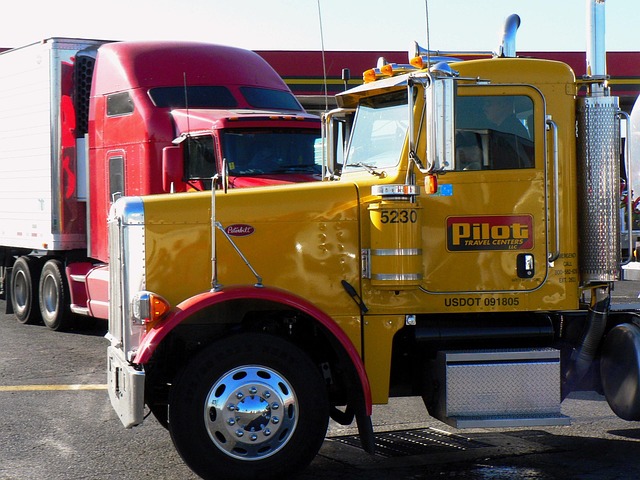Looking to register your car in California? This comprehensive guide walks you through every step of the process. From understanding the basics of California’s car registration requirements to gathering essential documents, performing a crucial DMV VIN verification, and completing the application, we’ve got you covered. Learn how to pay the necessary fees and receive your official registration papers with ease.
- Understanding the California Car Registration Process
- Gather Required Documents for DMV Visit
- Perform a Vehicle Identification Number (VIN) Verification
- Complete the Registration Application at the DMV
- Pay the Necessary Fees and Receive Your Registration Papers
Understanding the California Car Registration Process

In California, registering a car involves several steps, beginning with understanding the process and gathering necessary documents. The first crucial step is to ensure your vehicle meets all safety and emissions standards set by the state. After that, you’ll need to schedule a DMV (Department of Motor Vehicles) appointment for vehicle registration and title transfer. During this visit, you’ll be required to present valid identification, proof of insurance, and payment for the registration fee. Additionally, the California DMV conducts a DMV vin verification process, which involves checking the vehicle’s unique identifier (VIN) to ensure it matches the information on record.
A mobile vin inspection or mobile vin verification service can be particularly convenient if you prefer not to visit a DMV office. These services send a professional to your location to perform the VIN check, streamlining the initial registration process. Remember to keep all documentation organized, as you’ll need it throughout the registration journey and for future vehicle transactions.
Gather Required Documents for DMV Visit

Before visiting your local California Department of Motor Vehicles (DMV) office to register a car, make sure you have all the necessary documents. This process is known as dmv vin verification and ensures that your vehicle’s history and identification are accurately checked. You’ll need the following items:
1. The title for the vehicle, if available. If not, a bill of sale or purchase agreement from the seller will suffice.
2. Your valid driver’s license.
3. Proof of insurance, which includes both the policy and proof that it meets California’s minimum liability requirements.
4. A completed Vehicle Registration Application form, which can be obtained from the DMV website or filled out at the office.
5. The vehicle’s vin inspection report, typically provided by the previous owner if the car is used. If you have a recent purchase, this might already be included in your sales documents. Alternatively, many services offer mobile vin verification, allowing you to get this information quickly and conveniently without visiting a DMV office.
Perform a Vehicle Identification Number (VIN) Verification

Before proceeding with the registration process, it’s crucial to perform a Vehicle Identification Number (VIN) verification. This step is essential as it ensures that your car’s details match those on record with the California Department of Motor Vehicles (DMV). A mobile vin verifier or a vin inspection can help you complete this task efficiently. By cross-referencing the VIN with official databases, you can confirm important vehicle information such as its make, model, year, and any previous owners.
During this process, you’ll need to ensure that all details are accurate and up to date. This includes verifying the vehicle’s title, insurance status, and any outstanding issues that might affect registration. A mobile vin inspection is particularly useful for those who prefer convenience, as it allows you to complete this critical step without having to visit a DMV office.
Complete the Registration Application at the DMV

To begin the registration process, visit your local California Department of Motor Vehicles (DMV) office and pick up a Registration Application form. This form will require detailed information about both you and your vehicle, so ensure you have all necessary documents on hand before starting. Fill out the application completely and accurately, double-checking each entry to avoid delays later in the process.
A key step in the registration process involves completing a DMV VIN verification. This requires you to provide the Vehicle Identification Number (VIN) of your car for cross-referencing with the agency’s records. You can complete this vin inspection on-site or use a mobile vin verifier for a more convenient option, allowing you to verify the VIN without visiting the DMV directly.
Pay the Necessary Fees and Receive Your Registration Papers

After completing your car’s purchase, it’s time to pay the fees associated with registering your vehicle in California. This process involves a few steps and requires you to be prepared with essential documents and information. One crucial step is the DMV (Department of Motor Vehicles) VIN verification, ensuring that your car’s unique identifier, the Vehicle Identification Number (VIN), is accurate and matches the vehicle’s specifications.
You will need to visit a local DMV office or utilize their online services to pay the registration fees. This usually includes a base fee and potentially additional charges based on your vehicle’s type and age. Once processed, you’ll receive your registration papers, also known as the Certificate of Registration, which officially registers your car in California. Ensure these documents are kept secure, as they are necessary for future vehicle-related transactions.
Registering a car in California involves understanding the state’s process, gathering essential documents, completing a DMV VIN verification, and filling out an application. Once approved, you’ll pay relevant fees and receive your registration papers, ensuring your vehicle is legally compliant on California roads. Remember to conduct this process promptly to avoid any disruptions during your daily commute.
